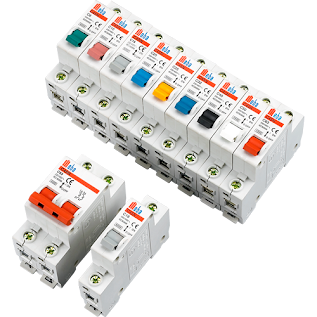A thermal overload relay is a
type of protective device that is used in electrical systems to protect against
excessive current or heat that can cause damage or even pose a safety hazard.
In this blog, we'll explore the basics of thermal overload relays, their
applications, and how they work.
What is a Thermal Overload Relay?
A thermal overload relay is a type of relay that is
designed to protect an electrical circuit from damage due to excessive current
or heat. It works by monitoring the temperature of the electrical circuit and
disconnecting the power supply if the temperature exceeds a predetermined
level.
The thermal overload relay is made up of
a bimetallic strip, which is composed of two different metals with different
thermal expansion coefficients, which are welded together. When the strip is
heated, the two metals expand at different rates, causing the strip to bend.
This bending action is used to actuate a switch, which interrupts the flow of
current to the circuit.
Applications of Thermal Overload Relays
Thermal overload relays are commonly used in a wide
range of applications, including industrial equipment, motor control centers,
and electrical panels. They are typically used in applications where the motor
or other electrical device is subject to frequent starts and stops or where
there is a risk of overheating due to overloading.
In industrial applications, thermal overload relays are
often used in conjunction with contactors to control the operation of motors.
Contactors are used to switch the motor on and off, while the thermal overload
relay protects against overload and overheating conditions.
How Does a Thermal Overload Relay Work?
The overload thermal relay works
by monitoring the temperature of the electrical circuit and disconnecting the
power supply if the temperature exceeds a predetermined level. The bimetallic
strip in the thermal overload relay is designed to bend at a specific
temperature, which is set by an adjustment mechanism.
When the temperature of the circuit rises above the set point, the bimetallic strip bends tripping the switch. It interrupts the flow of current to the circuit. This action protects the circuit from damage due to overheating or overload conditions.
Follow us on Twitter






